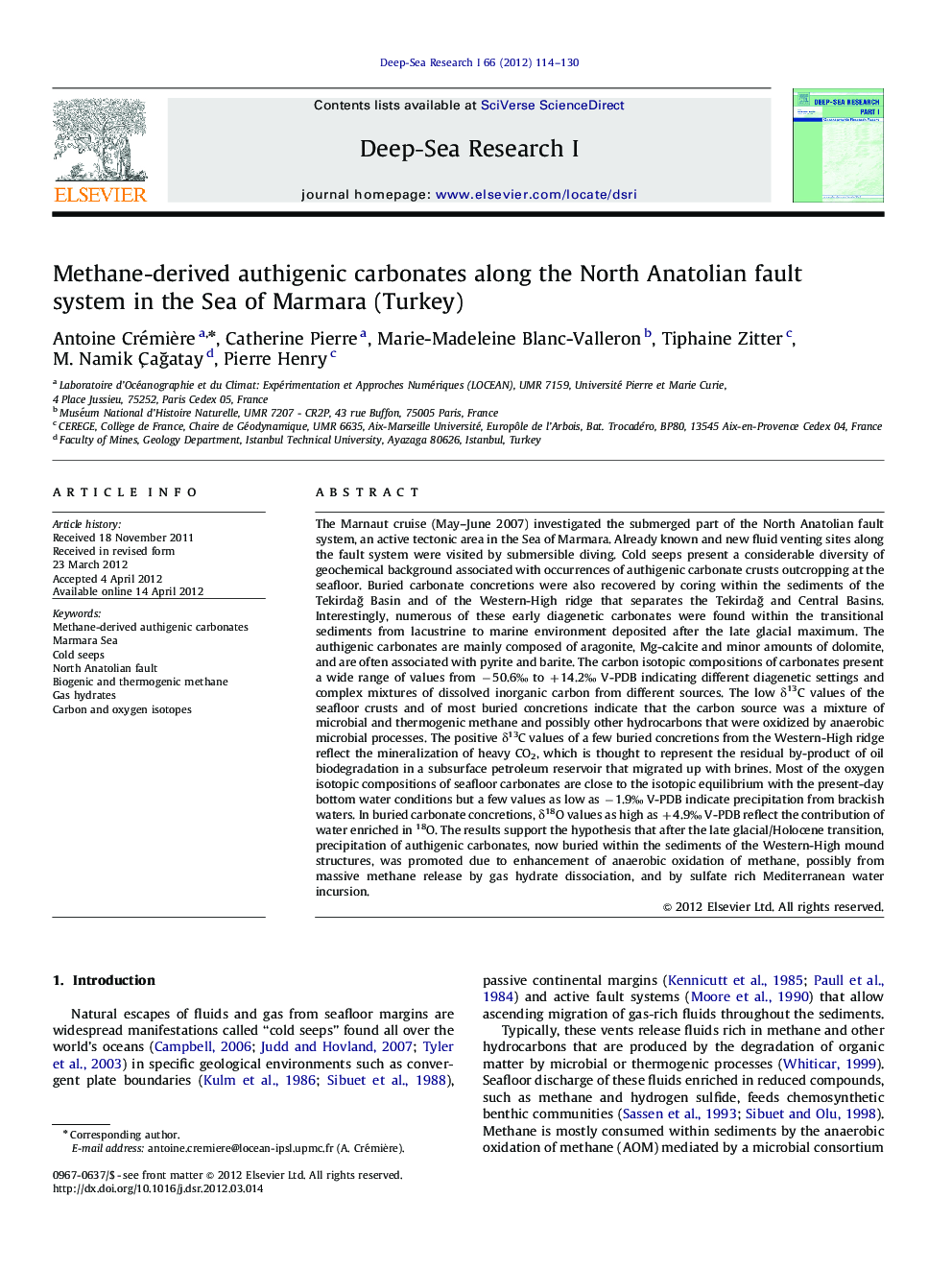| کد مقاله | کد نشریه | سال انتشار | مقاله انگلیسی | نسخه تمام متن |
|---|---|---|---|---|
| 4534702 | 1626364 | 2012 | 17 صفحه PDF | دانلود رایگان |

The Marnaut cruise (May–June 2007) investigated the submerged part of the North Anatolian fault system, an active tectonic area in the Sea of Marmara. Already known and new fluid venting sites along the fault system were visited by submersible diving. Cold seeps present a considerable diversity of geochemical background associated with occurrences of authigenic carbonate crusts outcropping at the seafloor. Buried carbonate concretions were also recovered by coring within the sediments of the Tekirdağ Basin and of the Western-High ridge that separates the Tekirdağ and Central Basins. Interestingly, numerous of these early diagenetic carbonates were found within the transitional sediments from lacustrine to marine environment deposited after the late glacial maximum. The authigenic carbonates are mainly composed of aragonite, Mg-calcite and minor amounts of dolomite, and are often associated with pyrite and barite. The carbon isotopic compositions of carbonates present a wide range of values from −50.6‰ to +14.2‰ V-PDB indicating different diagenetic settings and complex mixtures of dissolved inorganic carbon from different sources. The low δ13C values of the seafloor crusts and of most buried concretions indicate that the carbon source was a mixture of microbial and thermogenic methane and possibly other hydrocarbons that were oxidized by anaerobic microbial processes. The positive δ13C values of a few buried concretions from the Western-High ridge reflect the mineralization of heavy CO2, which is thought to represent the residual by-product of oil biodegradation in a subsurface petroleum reservoir that migrated up with brines. Most of the oxygen isotopic compositions of seafloor carbonates are close to the isotopic equilibrium with the present-day bottom water conditions but a few values as low as −1.9‰ V-PDB indicate precipitation from brackish waters. In buried carbonate concretions, δ18O values as high as +4.9‰ V-PDB reflect the contribution of water enriched in 18O. The results support the hypothesis that after the late glacial/Holocene transition, precipitation of authigenic carbonates, now buried within the sediments of the Western-High mound structures, was promoted due to enhancement of anaerobic oxidation of methane, possibly from massive methane release by gas hydrate dissociation, and by sulfate rich Mediterranean water incursion.
► Isotopic composition of fault-related MDAC indicates various fluids origin.
► C isotopic compositions indicate 13C-depleted hydrocarbons as main carbon sources.
► Local positive δ13C values indicate the contribution of 13C-rich DIC fluids.
► O isotopic compositions evidence influence of present-day bottom and brackish waters.
► During the last deglaciation, environmental changes triggered carbonate diagenesis.
Journal: Deep Sea Research Part I: Oceanographic Research Papers - Volume 66, August 2012, Pages 114–130